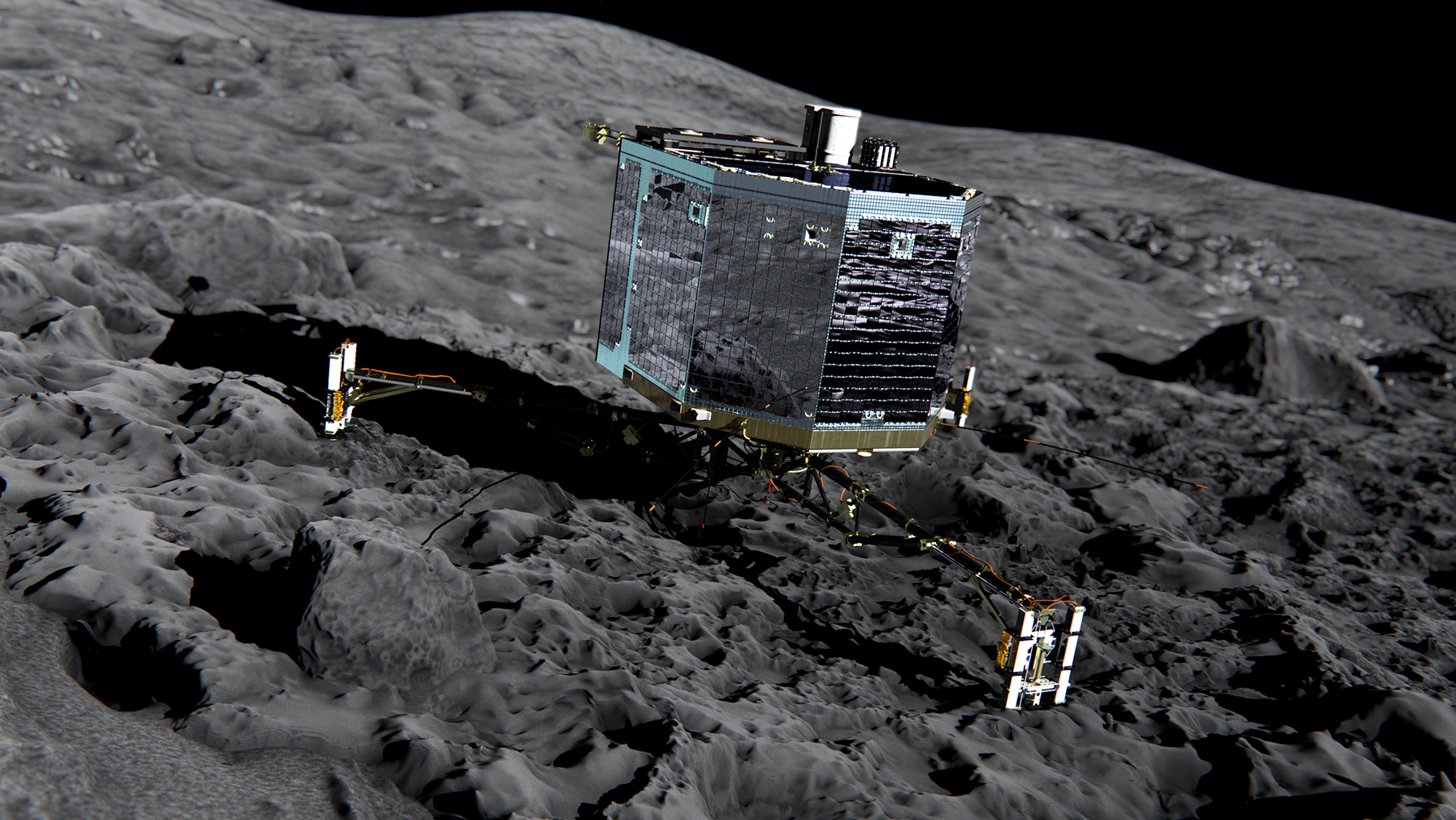Don’t Miss: Comet Landing Tomorrow
Make sure you don’t miss the historic comet landing ten years in the making. Your options for live-streaming tomorrow:
- ESA will have live coverage beginning tonight and all day tomorrow.
- NASA Television will be covering the event starting at 9 am tomorrow.
- Livestream will have a mirrored feed of ESA’s live coverage.
- The Telegraph will have up-to-the-minute updates and other miscellaneous coverage.
The clock ticks closer to an encounter of the first kind. Tomorrow the ESA’s unmanned Rosetta will drop a robotic lander onto the surface of a 22 trillion-pound comet barreling through space at 30,000 mph. The target, known as 67P/C-G (short for 67P/Churyumov–Gerasimenko), circles the sun every six and a half years and is expected to yield new insights into comet geology, the origins of our solar system, and of life on Earth.
Rosetta was launched back in 2004 as a follow-up mission to the ESA’s own Giotto spacecraft, which pulled data from Halley’s Comet. While primarily an ESA brainchild, NASA did contribute three of Rosetta’s onboard instruments. Its time spent in space prior to the pending comet approach has been resoundingly successful, with a sweep of flybys of local asteroids and planets, and even an up-close look at the aftermath of NASA’s Deep Impact mission, famous for shooting an impactor at comet Tempel 1 in 2005. In total, Rosetta has journeyed 4 billion miles (6.4 billion km) through the solar system on course to its eventual destination of Comet 67p/C-G. The full timeline is visualized here.
A rendezvous between comet and machine is easily one of the most daunting technological and logistical feats of spaceflight ever attempted. To cruise around in the vacuum of space, Rosetta must rely strictly on energy from the sun for power. The farther it drifts from the sun, the less power returns the craft’s solar panel array has to work with. Traveling around the inner loop of the solar system and spying on nearby objects allowed enough juice to power the craft indefinitely. But the comet’s enormous distance from the sun meant that a hibernation-like state was required to bridge the gap with enough reserve power for the mission’s climax. For two and a half years ESA powered down Rosetta’s onboard electronics while it stalked its prey in deep space. That extended slumber was interrupted this past January as it readied for the most harrowing stage of the mission.
Right now mission control is preparing for the separation phase of the Philae lander from Rosetta, which is scheduled to occur at 4 am EST. By 11 am tomorrow, if all goes as planned, the human species will have landed a probe onto a far-flung comet moving at vertiginous speed. Signals sent from Earth will require tens of minutes to reach Rosetta orbiting 317 million miles (510 million km) away. After separation, the lander will fire two harpoons into the comet proper to secure a safe landing. Once aboard it will unleash its full armamentarium of survey gear, including an industrial drill and a suite of spectrometers and magnetometers for measuring chemical composition and magnetic field strength, respectively.
Moments like these don’t come often. We should never take for granted what we can achieve when we guide our intelligence in scientific directions. Be proud that you’re a member of a civilization that accomplishes things like this.
Update 11.12.2014: LANDING COMPLETE, reports ESA. At 11:03 EST (16:03 GMT), Philae has successfully docked on the comet and is relaying data back to Earth every few minutes. Now it’s time for it to do what it does best: science! These are not the ending credits for a job well done, but an exciting start to the second phase of the mission.
Update 11.15.2014: Due to its bouncy landing, Philae’s photovoltaics did not achieve line of sight with the sun. Bankrupted of power, the lander is nonfunctional for the time being, ESA reports. “With its batteries depleted and not enough sunlight available to recharge, Philae has fallen into ‘idle mode’ for a potentially long silence. In this mode, all instruments and most systems on board are shut down…From now on, no contact would be possible unless sufficient sunlight falls on the solar panels to generate enough power to wake it up.” But fret not; Philae has already gotten what it came for—geological samples, temperature readings and hordes of photos—and ESA considers the mission complete. Anything else, such as power being restored next August when its orbit is nearest the sun, will be a bonus to an already lucrative project.



Comments